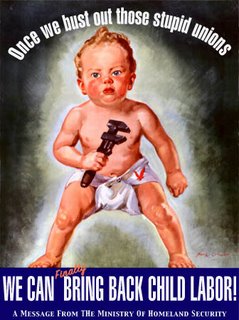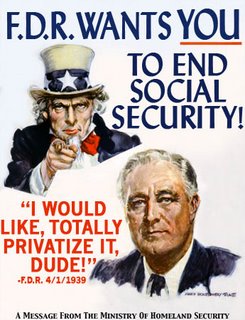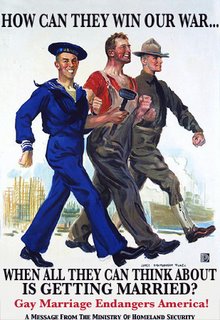Web Assignment 1:
The main topic of this article is the ways African-Americans were oppressed during slavery and closely after slavery. They talked about the different forces that oppress them such as the slave owners and the Ku Klux Klan. They also talk about the lives of their family members during and after slavery. They mention things like how they found out they were free or some of the troubles they had when they attempted to vote. "The nigger would ask right back, 'How you goin' to vote?' The white man would say, 'I'm goin' to vote as I damn please.' Then the nigger would say, 'I'm going to do the same thing.' That started the trouble." (Reeves, p.7)
These two narratives bring up voting issues, Ku Klux Klan issues, and life during slavery for African Americans. All three of these topics were examined in our discussion on Reconstruction. "The Ku Klux didn't have no particular effect on the Negro except to scare him" (Reeves, p.6).
The voting issues covered in the two narratives represent the theme of "power and participation." The whites knew that by giving the African Americans the power to vote and the chance to participate in the country's government, gave the African Americans a lot more power and freedom than they previously had. The whites did not like the idea of such a great change occurring. The Ku Klux Klan issues and the descriptions of life during slavery for African Americans both touch on the theme of "visions and collisions." Both narratives, specifically Reeves', give a specific account of how the Ku Klux Klan treats African Americans with violence and hatred after the civil war. The second hand accounts of the family member’s lives during slavery mention things like how the slaves were punished or what they did for amusement.
I believe it benefited the narrative because it gave the individuals more time and experience to relate their experiences right after the war to the ones they have later in their lives. Many changes in the ways African Americans were treated took place during those decades from when they were set free to when they were interviewed. I do not think that the time interval affected the reliability of the narratives. The interview himself says "His failure to talk on details of his early life seem to the interviewer due to unwillingness rather than lack of memory" (Wise, p.3).
I believe the experience since slavery time has made the individuals being interviewed view slavery worse than they originally had. This is because right after slavery, they were use to being treated so poorly. Now that they have been free for a fair amount of time, they experience many of the freedoms they never had before. This allows the African Americans to see actually how unfairly they were treated during slavery.
I think that the interviewers used some of the same questions because the two individuals being interviewed touched on almost all of the same topics. This caused some correlation and commonality between the two narratives. In my opinion, not unusual or disturbing stood out from these documents.
Web Assignment 2:
In Emanuel Leutze's mural, he touches on many different themes of Westward movement and exploration. He gives images of the different kinds of people who are going to be settling this new land. He also gives images of the different natural monuments and perils that the people moving westward faced on their journey to the coast. Leutze includes some images of the native peoples. He shows an Indian preparing to fire an arrow at a hunter and he has an image of various Native Americans creeping around behind trees and boulders. The lighting and over all feel one gets from the mural is hope and a bright future. The images of the settlers show that the west will fulfill many hopes and dreams. Everyone in the mural seems like they have already experienced a lot of their life and have been through a lot to get to where they are in the painting. The west feels like a final destination and home to them.
In her version of the painting, Palmer takes a much more industrialized and civilized approach. This is because she uses images such as telegraph lines, railroads, mining, and lumber. All of these images have an economic theme. Her lithograph shows images of a much more civilized west. She does this by using images of log houses and small villages. Leutze's work is much more based on exploration and future prosperity than economics and domestication of the land. In this piece, Native Americans are riding on their horses behind a train while smoke and steam from the train and blowing in their faces. This shows that the whites have no respect for the Native Americans and feel they should move out of the white mans way.
Many of the stereotypes are that the man has a beard, the family lives in a log cabin, the wife does all of the work at home, and the son looks up to his father. It views the settler in a positive light because it shows how satisfied and content with his day of hard work and life in the West. It shows that he has a son who is willing to help his father work and respect him. It also shows the woman tending to the house needs, which was a very honorable and common thing at the time.
In this picture there are many different images of progress. The image of the train, the angel carrying the telegraph line, the spreading farms and domestication, and the fleeing natives from the white men all show American progress into the west. Gast shows the prey of the white man moving and fleeing to the left and off of the scene while the animals owned by the white man, such as oxen and mules, are moving into place. Gast is showing many images that the white man has in the East slowly moving towards and taking over the West.
Berkeley's poem talks about many of the good and beneficial things that would come out of the movement to the West. I feel these paintings show a similar positive light on the movement to the West. They all show the hopes and dreams that will be fulfilled in the west and all of the works show the bright future that living in and civilizing the West will bring. I feel that the images are very accurate, specifically in portraying Americans attitude towards civilizing and settling the west. I feel that the images of the Native Americans shows the dislike the Americans had for the Native Americans. The images of the trains show Americas desire to connect the country.
Web Assignment 3:
A stereopticon is a magic lantern of sorts, which has two lenses that are used to dissolve between images when projected. These lanterns were used as education and entertainment before moving pictures. In this poster, the most significant thing was how the story was going to be presented. Other than by orally telling the story, the stereopticon was one of the more common ways to portray an event or tell a story with images. I believe Mr. Mumpher told a first hand account of his experiences in the war in the Philippines. I think he supported the war effort because the poster seems to excite people about the great and unique experiences of war. No one wants to hear upsetting and negative things about war for entertainment.
Web Assignment 4:
All three of the articles focus on the reasons why America is the right country to be in charge of the Philippines. All the articles explain the domestic, economic, and ideological reasons for why the United States has the liberty and obligation to take control of the Philippines. In "America as a Pacific Power," the author explains the economic reasons for why America should occupy the Philippines. He states, "San Francisco is nearer to Asiatic ports than any of the commercial centers of Western Europe. In developing this trade Hawaii, the Ladrones and the Philippines will be of incalculable value,..." (America as a Pacific Power, p.4).
Conclusion:
The age between 1863 and 1900 marked the time in history where the United States began to become one of the most powerful nations in the entire world. At the beginning of this time period, the United States brought into question and answered many internal issues about race, freedom, and other social issues. Once done with these internal problems, the United States turned westward and in search of completing Manifest Destiny. This continued on till the end of this time period, but what is so significant about this time was the amount of growth and expansion the United States made. The United States became an economic powerhouse during this era with the Second Industrial Revolution and changed American economy forever. If this time period were to be named anything, it should be name "The Era of Learning" because the United States realized it had problems and mistakes and then fixed and learned from them.






